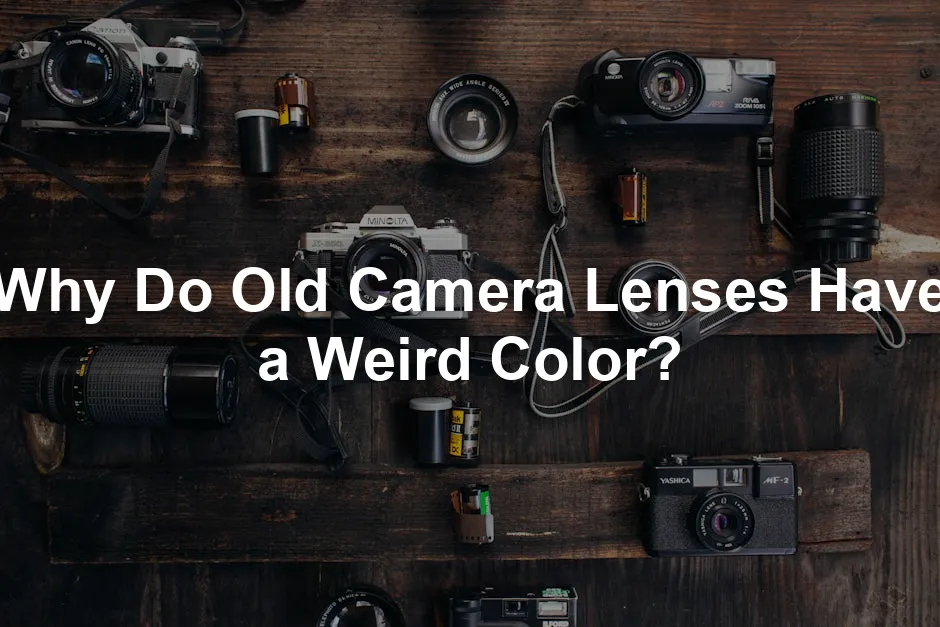
Why Do Old Camera Lenses Have a Weird Color?
Introduction
Have you ever noticed that old camera lenses often have a unique color? Photographers and collectors find these yellow or unusual hues intriguing. They often wonder why these color shifts happen. Let’s explore the fascinating reasons behind these phenomena.
Summary and Overview
This article provides a comprehensive look at why vintage camera lenses develop distinct color characteristics. We’ll start with a brief history of camera lenses and how they have evolved over the years. We’ll discuss key concepts like lens materials, coatings, and how aging impacts color. Finally, we’ll delve into the growing appeal of vintage lenses in today’s photography scene.
Camera lenses have come a long way since their inception. Early lenses were simple and lacked advanced coatings. This resulted in images that were often soft and muted in color. As technology advanced, manufacturers introduced new materials and coatings to enhance image quality. However, these innovations sometimes had unintended effects, leading to the unique color shifts we see in older lenses today.
Vintage lenses are highly sought after for their character and charm. Many photographers appreciate the warmth and nostalgia these lenses bring to their work. Understanding the history and science behind these color changes adds depth to their appeal.
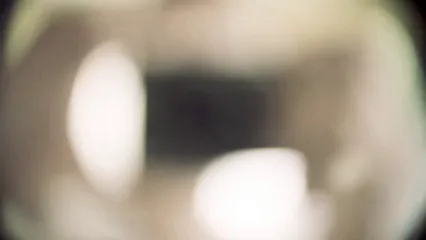
To keep your vintage lenses in pristine condition, consider investing in a Vintage Camera Lens Cleaning Kit. It’s essential for maintaining the optical clarity and performance of your lenses, ensuring you capture those nostalgic shots without any smudges or dust!
Understanding the Basics of Camera Lenses
The Evolution of Camera Lens Technology
The journey of camera lens technology began in the 19th century. Early lenses were made from basic glass without any coatings, resulting in hazy images. As time progressed, advancements in manufacturing techniques allowed for better optical performance.
By the mid-20th century, lens makers started using specialized glass types and coatings to improve clarity and reduce glare. One notable development was the introduction of thorium glass, which enhanced refractive properties. This innovation allowed for sharper images, especially in wide-angle lenses. However, the use of thorium also led to the yellowing effect we often see in older lenses.
Today, modern lenses employ advanced coatings and materials that prioritize sharpness and color accuracy. Yet, the unique qualities of vintage lenses continue to capture the hearts of photographers, demonstrating a fascinating blend of history and technology.

If you’re considering adapting your vintage lenses to modern cameras, don’t forget to grab a Camera Lens Adapter. This handy tool allows you to mount your beloved vintage lenses onto your modern camera, giving you the best of both worlds!
Lens Coatings and Their Impact on Color
Lens coatings play a crucial role in how camera lenses perform. They help minimize reflections and enhance light transmission. There are mainly two types: single-layer and multi-layer coatings. Single-layer coatings consist of one thin layer, while multi-layer coatings have several layers, providing better results.
Different coatings impact color rendition significantly. A well-coated lens transmits light more accurately, resulting in vivid colors. In contrast, older lenses with simpler coatings may produce color shifts, leading to a vintage aesthetic. As these coatings age, they can degrade. This degradation often leads to unwanted color changes in older lenses.
Photographers using vintage lenses may notice these shifts in hue. The unique coloring can add character to photos, but it also raises questions about the lens’s quality. Understanding how coatings affect color can help you appreciate the beauty of vintage lenses, quirks and all.

To ensure your lenses are performing at their best, consider a Microfiber Cleaning Cloth. This is perfect for gently wiping away dust and fingerprints without scratching the delicate lens surface.
Lens Design and Optical Characteristics
The design of a camera lens significantly affects its color transmission. Older lenses often have simpler constructions. This means fewer elements and coatings compared to modern designs. Simpler designs can lead to a more pronounced character in the colors produced.
For instance, older lenses might use single-layer coatings, which can result in unique color renditions. These coatings were meant to reduce reflections, but they often create color shifts over time. As a result, you might notice warmer tones or softer contrasts in images taken with these lenses.
Modern lenses, with their complex multi-layer coatings, aim for color accuracy and brightness. However, this can sometimes lead to a more sterile look. In contrast, vintage lenses offer a warmth and charm that many photographers appreciate. Their optical characteristics, shaped by simpler designs, provide an artistic flair that stands out in today’s digital world.
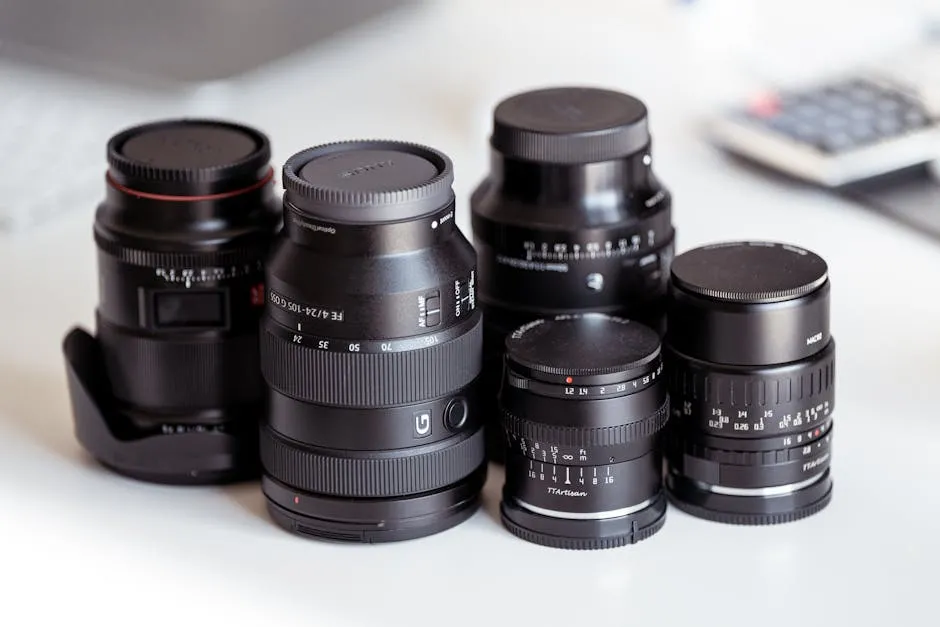
Examples of Notable Vintage Lenses
When discussing vintage lenses, a few notable models stand out for their unique color traits. The Helios 44-2 Lens is famous for its “swirly” bokeh and warm color tones. Photographers love its ability to create dreamy images with a nostalgic feel.
Another example is the Kodak Aero-Ektar Lens, known for its rich blue-violet color shifts. This lens was designed for aerial photography but has gained popularity for its striking contrast and unique color palette.
Then there’s the Leica 50mm f/1.2 Noctilux Lens. This lens is coveted for its creamy colors and soft edges, thanks to its older coating technology. Each of these lenses has qualities that make them desirable. They offer distinct aesthetics that many modern lenses simply cannot replicate.

To protect these valuable vintage lenses, consider investing in a quality Lens Case. A good case provides the protection needed to keep your lenses safe from scratches and impacts, allowing you to focus on capturing stunning images.
The Appeal of Vintage Lenses in Modern Photography
Photographers are increasingly drawn to vintage lenses for their unique aesthetics. The character and warmth these lenses provide can be a refreshing change from the perfection of modern optics. Many believe that vintage lenses add a specific charm to their images.
Using these lenses can transform ordinary scenes into visually engaging stories. The imperfections found in vintage lenses, such as softness and vignetting, contribute to their artistic appeal. This aligns with the Japanese concept of wabi-sabi, which celebrates imperfection and transience.
Moreover, vintage lenses offer a tactile experience. Manually focusing these lenses encourages thoughtful composition and enhances creativity. The allure of their distinct look draws photographers seeking to stand out in a world filled with digitally perfect images. Embracing vintage lenses allows for a unique blend of history and modern artistry.
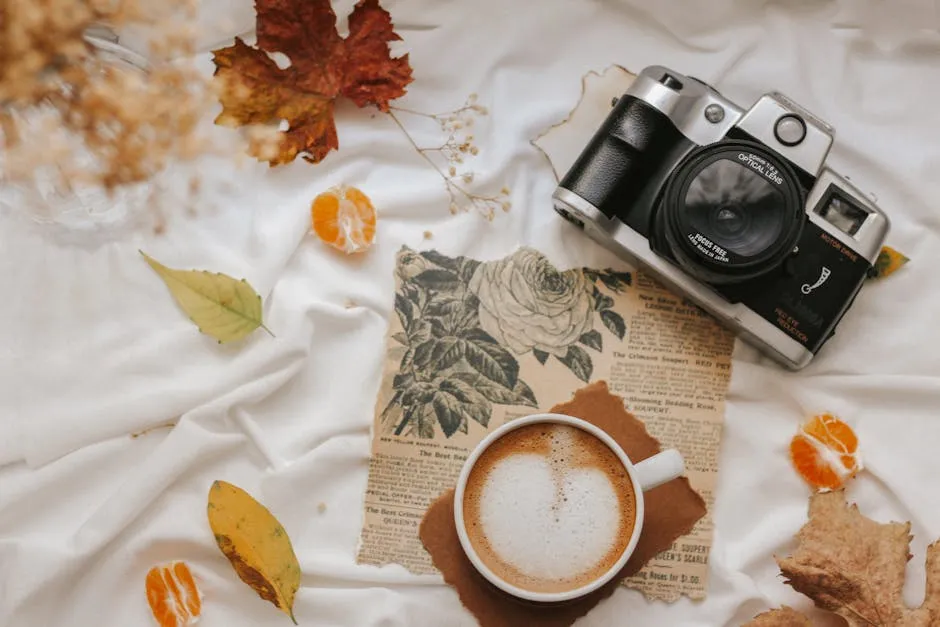
Addressing Color Issues with Vintage Lenses
Techniques for Minimizing or Enhancing Color Effects
Managing the color shifts from vintage lenses can be straightforward. First, consider using lens adapters. They allow you to mount older lenses on modern cameras. This combination can enhance your ability to capture accurate colors through better exposure settings and focal adjustments.
Post-processing techniques also play a crucial role. Software like Adobe Lightroom or Photoshop enables you to adjust white balance effectively. Experiment with color grading tools to bring back vibrancy. Many photographers even embrace the unique color effects as part of their creative style. After all, who says vintage can’t be beautiful?
Don’t shy away from exploring filters, either. Using Color Correction Filters can shift hues back to a more neutral palette. This is especially useful in tricky lighting situations. By combining these techniques, you can either minimize unwanted color shifts or enhance the vintage aesthetic you love.
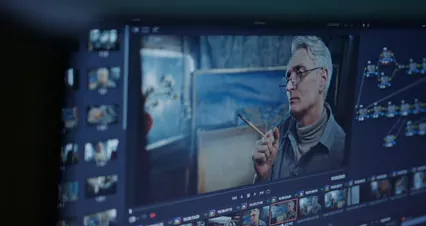
Restoration and Maintenance of Old Lenses
Caring for vintage lenses requires a gentle touch. Start with proper cleaning. Use a Lens Pen Cleaning Tool and a microfiber cloth to avoid scratches. Always clean in a circular motion from the center outward. This prevents dust and debris from scratching the lens surface.
Storage is equally important. Keep your lenses in a cool, dry place away from direct sunlight. Consider using padded cases to protect them from physical damage. Avoid extreme temperatures or humidity, as these can deteriorate both the lens glass and coatings over time.
Regular inspections can help, too. Check for signs of fungus or haze, which can develop in older lenses. If you notice degradation, seek professional servicing to restore functionality. With the right care, your vintage lenses can continue to produce stunning images for years to come.
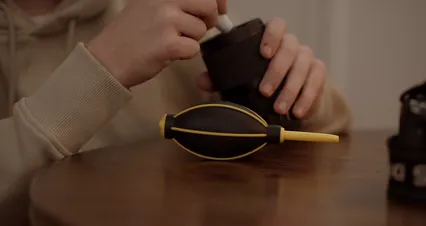
Conclusion
In summary, the coloration of old camera lenses is a fascinating blend of history and science. The unique hues they develop add charm to vintage photography. Despite their quirks, these lenses offer a distinct character that modern optics often lack. Embrace the beauty of imperfections and let vintage lenses enhance your creative journey. Give them a try and see how they can transform your photography!
FAQs
Why do some vintage lenses appear yellow?
Vintage lenses often contain thorium, a radioactive element. Thorium enhances the refractive index, improving image quality. However, it also causes yellowing over time due to radioactive decay. This yellowing is a natural process that occurs as the thorium interacts with oxygen and light. Additionally, older lens coatings can degrade, contributing to the lens’s color shift. The combination of thorium content and aging materials results in the distinctive yellow tint many photographers find charming.
Is the yellow tint harmful?
Generally, the yellow tint from thorium in vintage lenses poses minimal health risks. The levels of radiation emitted are significantly lower than what you would encounter during a transatlantic flight. Using these lenses in normal photography conditions is safe. However, prolonged exposure isn’t advisable. If you’re concerned, simply handle the lenses with care. Enjoying their unique qualities shouldn’t come with worries about safety.
Can I restore the original color of an old lens?
Restoring the original color of yellowed lenses can be a challenging task. One potential method involves exposing the lens to UV light, which may help reverse the yellowing. However, this process can be risky and might damage the lens if not done carefully. Professional recoating is another option, but it can be expensive. Many photographers embrace the yellow tint, finding it adds character to their images. Consider the unique aesthetic it provides before attempting restoration.
Are all old lenses radioactive?
Not all vintage lenses contain radioactive materials like thorium. Many lenses manufactured after the 1980s do not use thorium, opting instead for safer alternatives. While some classic lenses may exhibit yellowing due to thorium, others may develop color shifts from aging coatings or environmental exposure. It’s essential to research specific models if you’re concerned about radioactivity. Most vintage lenses can be appreciated for their unique characteristics without any health worries.
How do vintage lenses compare to modern lenses?
Vintage lenses often produce warmer, softer images with unique color renditions compared to their modern counterparts. They tend to have simpler designs with fewer optical elements, leading to distinct optical characteristics. Modern lenses prioritize sharpness and color accuracy, often resulting in a more sterile appearance. Many photographers appreciate the imperfections and artistic qualities of vintage lenses, finding that they add a nostalgic touch to contemporary photography. Embracing both can enhance your creative expression.
Please let us know what you think about our content by leaving a comment down below!
Thank you for reading till here 🙂
All images from Pexels




